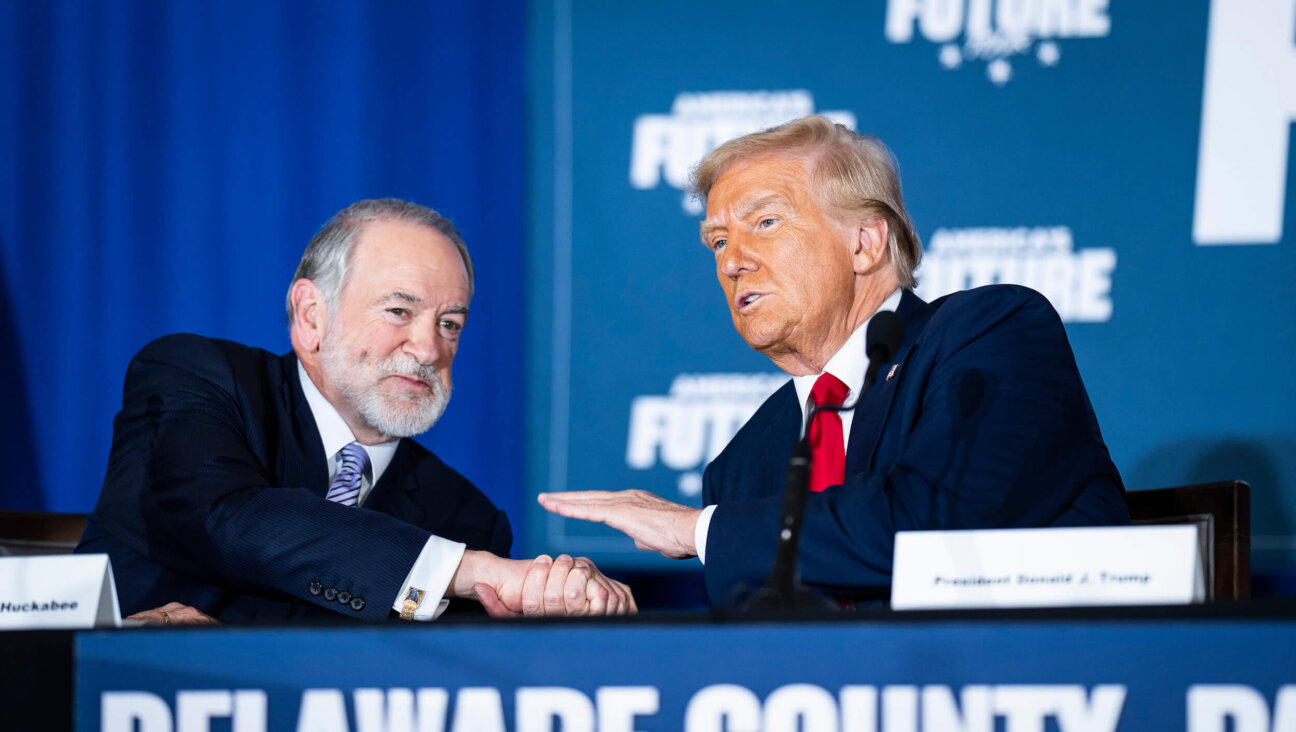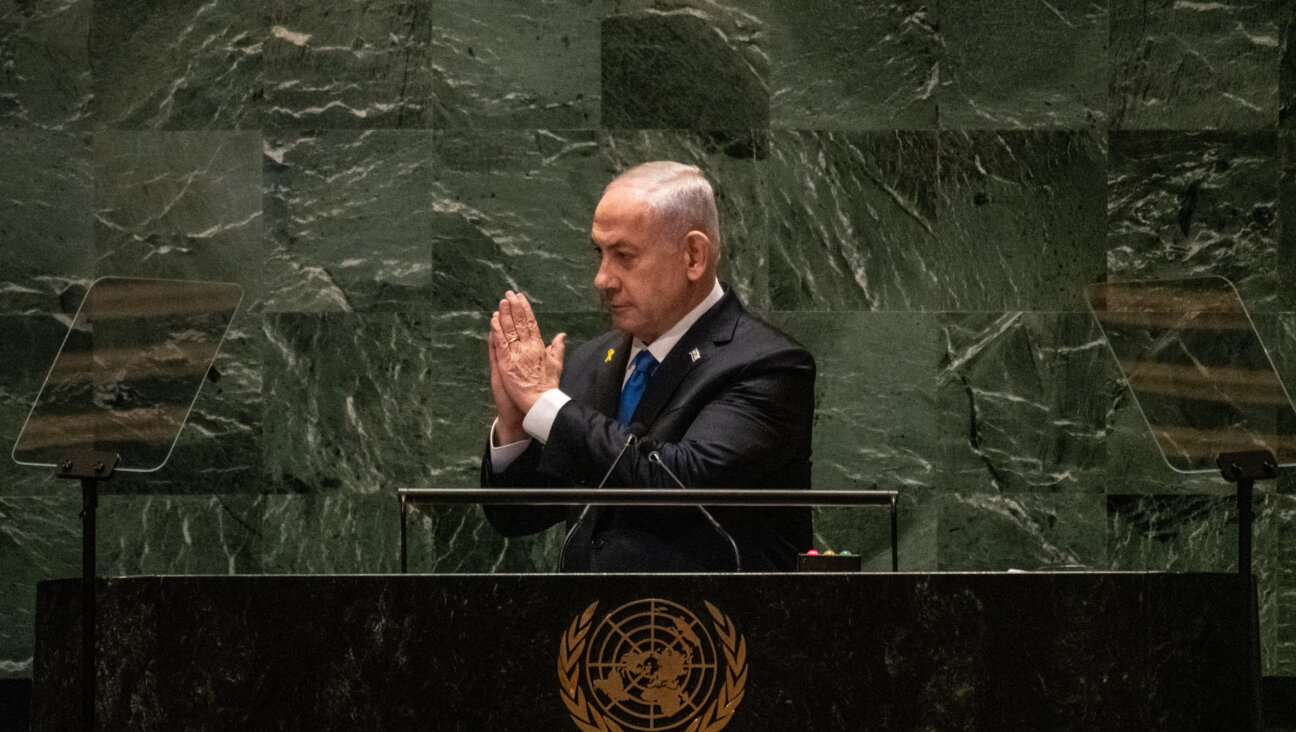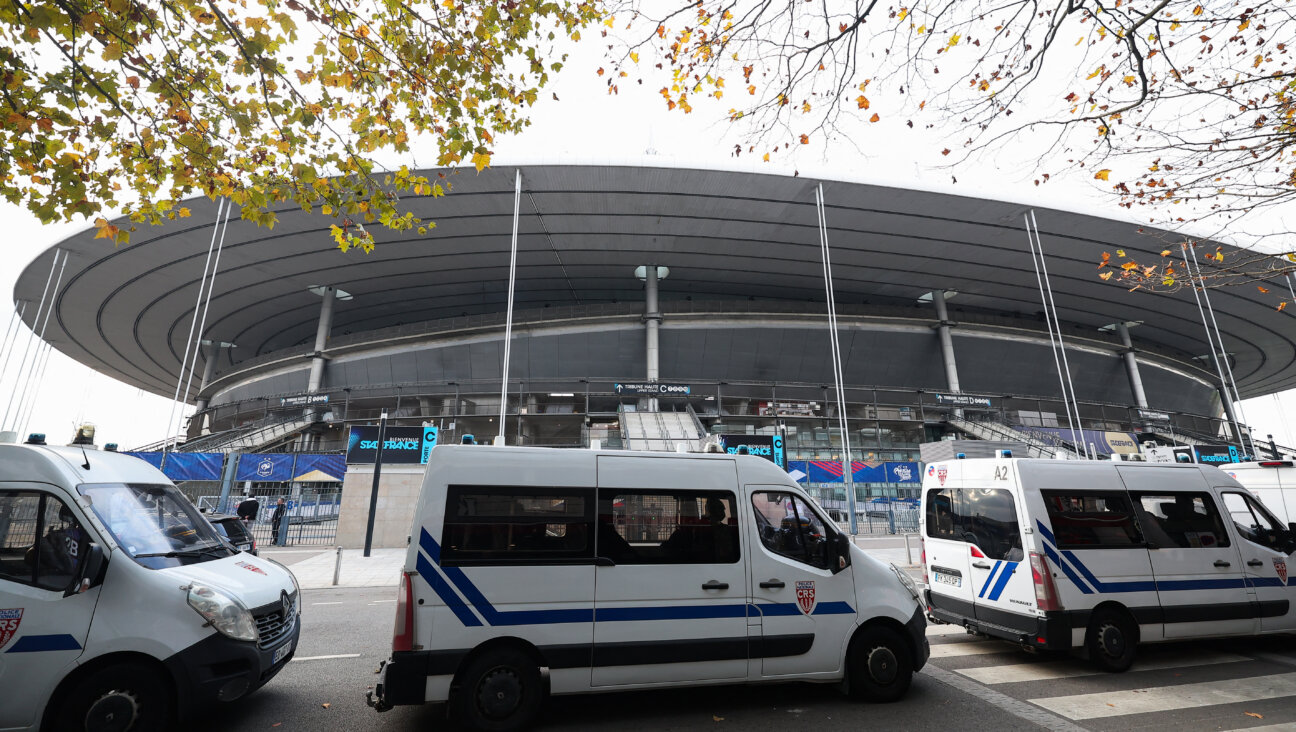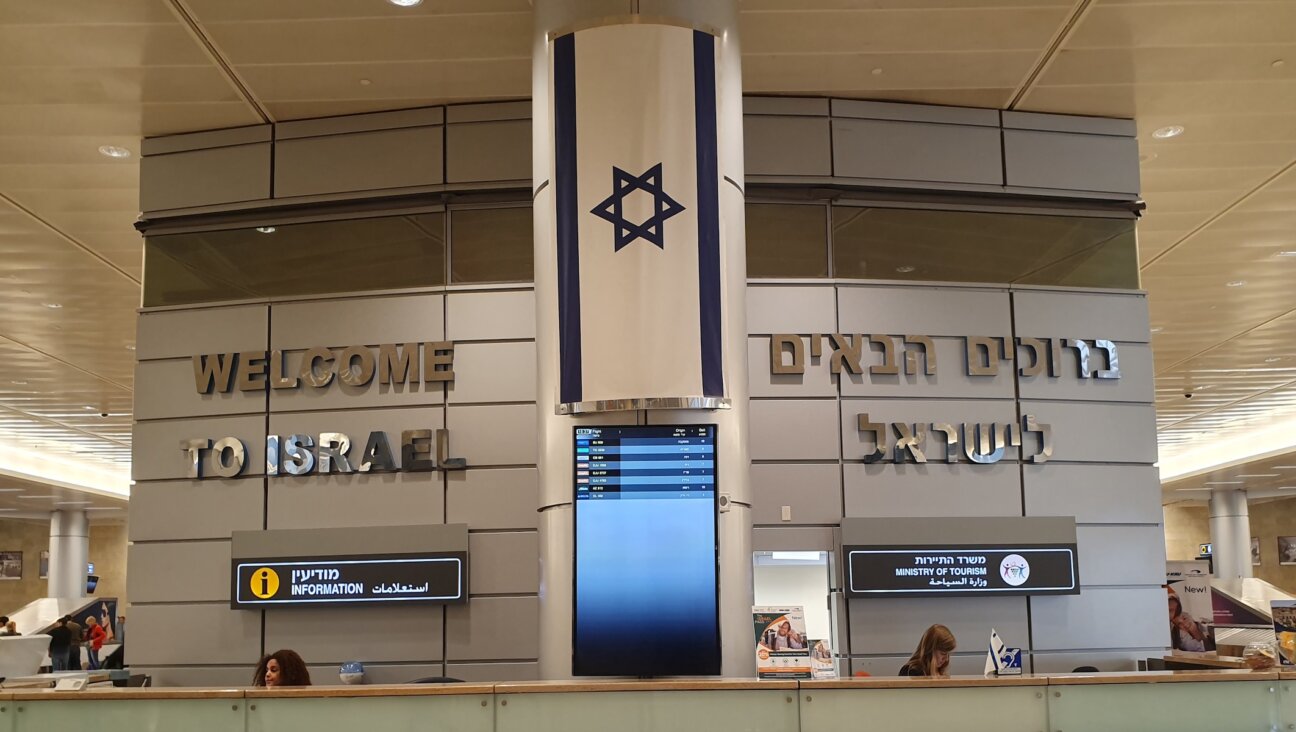License With Language
No, Dikla, this was not a pogrom.
The reference is to Dikla Cohen, whose photograph being escorted out of her home in Gush Katif appeared on page 1, above the fold, of The New York Times of August 18. In the caption beneath the photo, she is quoted as saying, “I feel today was a pogrom.”
But in fact it was nothing like a pogrom, and it is shocking that a Jew anywhere, no matter how distraught, would use that inflammatory word to describe the ordeal of a departure mandated by the government of Israel and executed by the army and police forces of the State of Israel.
In Gush Katif, no one was raped. In Gush Katif, no one was brutally and gratuitously beaten. In Gush Katif, those settlers who wanted to pack up their things and leave in an orderly fashion were not merely encouraged to do so, but were well compensated for doing so. And, perhaps more significant than all the rest, the “exile” to which the settlers were consigned was to the Jewish state.
A pogrom?
I don’t know whether Jewish students in Israel are still required to read Hayyim Nahman Bialik’s masterpiece, “In the City of Slaughter.” When I was a youngster, it was a staple of the American Hebrew school curriculum.
In the year 1903, in the early light of the new century, during the week of Passover, in a city called Kishinev in Russia, there took place a pogrom. In that pogrom, 49 Jews were killed. By contemporary standards, that is, of course, a relatively modest number, so swollen has become the ongoing chronicle of human savagery.
But by the standards of its own less congested time, the Kishinev pogrom was a spectacular calamity, and it evoked international outrage. In Russia itself, a distinguished committee of Jewish intellectuals dispatched a young poet named Hayyim Nahman Bialik, soon to be universally hailed as the poet laureate of the Jewish people, to produce an account of what had happened in Kishinev.
Bialik dutifully filled four large notebooks with a remarkably detailed rendering; those notebooks still exist. And a year later, he wrote “In the City of Slaughter.” Here’s a tiny excerpt from its more than 300 lines, not by any means the most graphic:
And you’ll flee and come to a yard
And this yard will have a heap in it
And on this heap they’ll have beheaded two — a Jew and his dog
One axe did for them both and in one heap they were thrown
And in the mixed blood of both pigs will snuffle and roll.
The pogroms in Russia continued for four years; in just one week in 1905, attacks took place against Jews in 600 communities, 300 Jews killed in Odessa alone, thousands wounded, tens of thousands ruined. And soon, just three decades later, two other lines from that same poem took on new and terrifying meaning as the Kingdom of Night descended on Europe.
… God called up the slaughter and the spring together;
The slayer slew, the blossom bloomed, and it was sunny weather!
Almost all the reports out of Gush Katif during the difficult days of emptying out the settlements emphasize the sensitivity of the army and police personnel. A soldier prays together with a settler before undertaking to remove him. Soldiers help pack up children’s toys before clearing the home. In one case at least, parents insist on being carried out of their home even as their children wail as they witness the event.
No one can say with any certainty what will follow in the wake of Israel’s withdrawal from Gaza — what will follow from the Palestinian side, what will follow from the Israeli side. The rumblings of Hamas are ominous; it claims that the “liberation” of Gaza is only the first step, that it will be followed by the liberation of Jerusalem, “east and west,” and then of all “Palestine, from the sea to the river.”
Those who have argued that Gaza will become a haven for terrorists, that a new round of attacks against Israel can be expected to be launched from Gaza, may prove right. We only can hope that the continued attention of the world community, significant investment in developing the economy and a more proactive assertion of government power by President Mahmoud Abbas will deter such violence.
As to Israel, we do not and cannot yet know whether the disengagement from Gaza that Hamas sees as a first step is seen by Prime Minister Sharon as a last step. There is at least some reason to believe — or, at least, hope — that the same logic that impelled Sharon to extricate Israel from Gaza will lead him to move boldly to end Israel’s occupation of the West Bank.
At the same time, the sense of trauma that has surrounded the Gaza disengagement may well offer an excuse for delay in disengaging from the bulk of the West Bank. The nation will plead exhaustion, and the same fanatic youth who infiltrated Gaza and sought to deter the withdrawal surely will not sit quietly by if an enlightened Israeli government seeks to free the nation of the burdens of occupation in the West Bank.
So there is much we do not yet know. But two things we do know, and it would be well for the rabbis and teachers of Israel to use these next months to impress what we know on all Israelis: This was not a pogrom. It was not anything like a pogrom. And being “forced” to live in Israel proper is not the same as being exiled. It is not anything like exile.
A message from our CEO & publisher Rachel Fishman Feddersen

I hope you appreciated this article. Before you go, I’d like to ask you to please support the Forward’s award-winning, nonprofit journalism during this critical time.
At a time when other newsrooms are closing or cutting back, the Forward has removed its paywall and invested additional resources to report on the ground from Israel and around the U.S. on the impact of the war, rising antisemitism and polarized discourse.
Readers like you make it all possible. Support our work by becoming a Forward Member and connect with our journalism and your community.
— Rachel Fishman Feddersen, Publisher and CEO























